Ever wondered what would happen if Mother Nature picked up a paintbrush? Across our planet, there are places so vibrantly colored that they seem to belong in an artist’s dream rather than the natural world.
Here’s a journey through 20 of Earth’s most stunning rainbow-colored cliffs and hills that look like they’ve been painted by a cosmic artist with an unlimited palette.
Zhangye Danxia, China
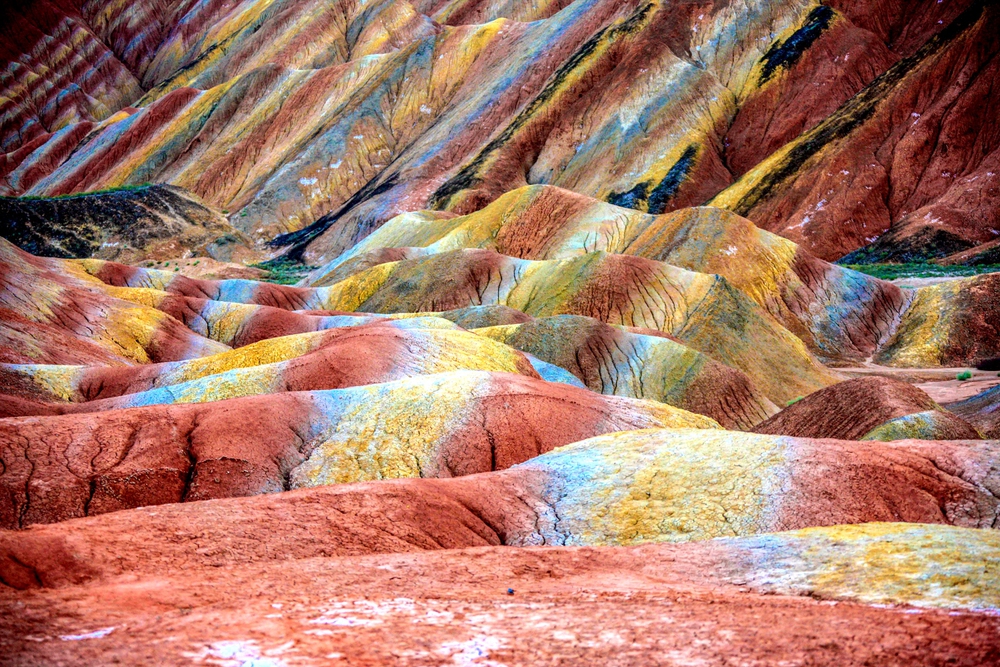
The striped mountains of Zhangye Danxia look like layers of melted candy stretching across the landscape in China’s Gansu Province. Formed over millions of years, these sandstone hills showcase bands of red, yellow, and orange that shift colors throughout the day as the sun moves across the sky.
What makes these mountains truly spectacular is their perfect layering – each stripe distinct and bold, as if painted by a careful hand rather than formed by natural processes. Local photographers often camp out for days to capture the perfect moment when the morning mist parts to reveal the mountains in their full glory.
The site became a UNESCO World Heritage Site in 2009, and since then, carefully placed viewing platforms have made it easier for visitors to appreciate the full spectrum of colors from multiple angles.
Rainbow Mountain, Peru
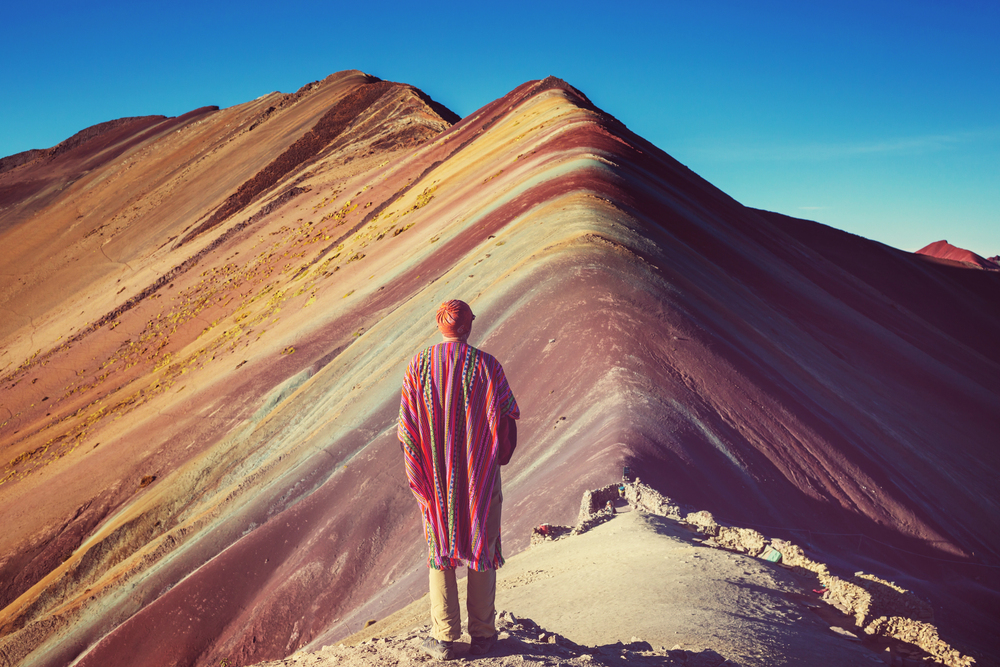
Hidden high in the Andes, Vinicunca Mountain remained a secret until melting glaciers revealed its spectacular colors just a few years ago. Turquoise, lavender, and gold stripes wrap around the mountain like a traditional Peruvian blanket created by different mineral deposits laid down over centuries.
Local guides share stories of their grandparents speaking of a rainbow mountain, but many dismissed it as folklore until climate change stripped away the snow and ice to reveal this natural masterpiece. The harsh environment and high altitude make this one of the more challenging rainbow mountains to visit, with tourists often spending several days acclimatizing in Cusco before attempting the trek.
The morning light creates the most dramatic display when the first rays of the sun hit the mineral-rich stripes and make them glow as if illuminated from within.
Like Travel Pug’s content? Follow us on MSN.
The Painted Desert, Arizona
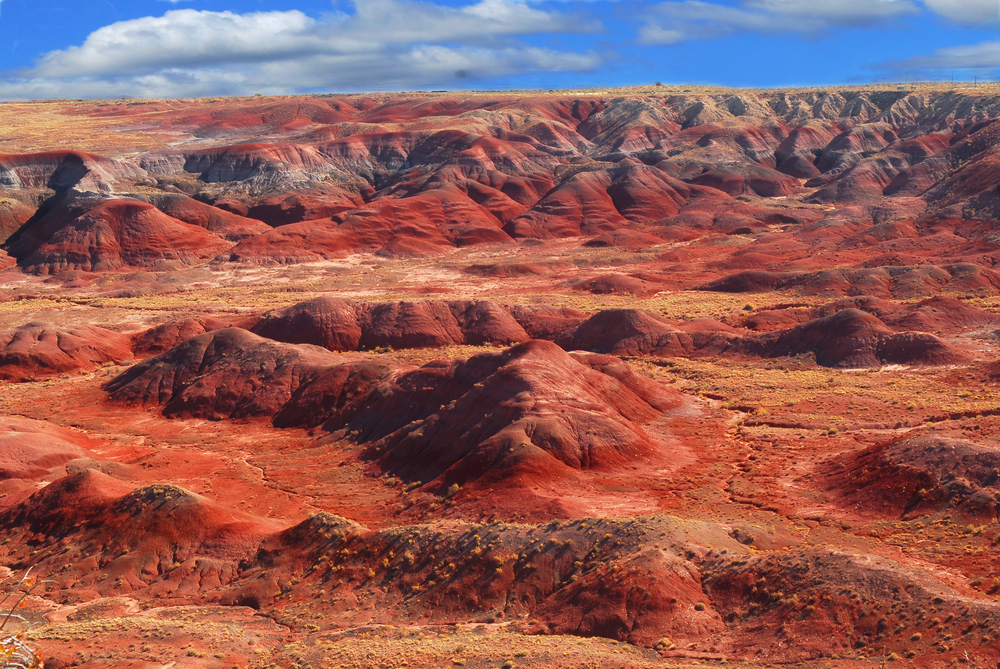
Sprawling across the northern Arizona badlands, the Painted Desert tells a 200-million-year-old story in shades of pink, purple, and red. Each layer represents a different chapter of Earth’s history, with colors shifting dramatically as storm clouds roll in or the sun sets.
The Navajo and Hopi people have lived among these colorful hills for generations, weaving the landscapes’ colors into their textiles and stories. Modern visitors often find themselves taking the same photos from the same spots as the first tourists did in the 1800s, proving some views never get old.
The desert’s colors are most vibrant during the golden hours of sunrise and sunset when the low angle of the sun makes the iron and manganese deposits in the rock seemingly come alive.
Rainbow Mountains, China
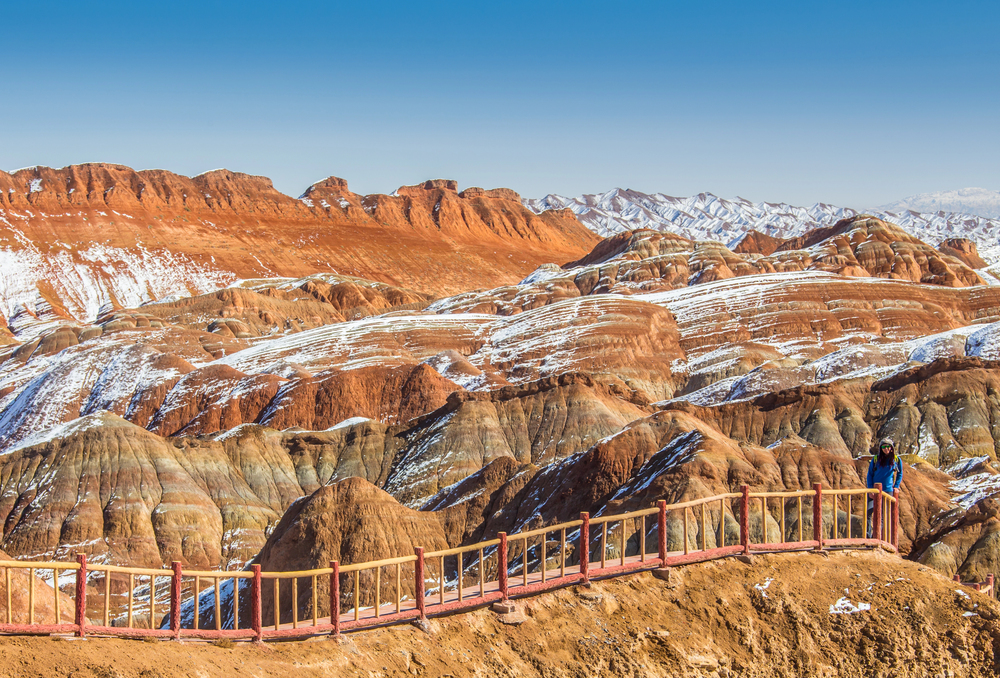
The Hongyugu Rainbow Mountains in the Xinjiang region paint an entirely different picture from their Zhangye Danxia cousins. Their peaks seem to ripple with waves of burgundy, green, and white, created by a unique combination of sandstone and mineral deposits that were once part of an ancient seabed.
Local shepherds have been using these colorful peaks as navigation markers for generations, with different colored bands serving as natural waypoints across the landscape. The mountains are particularly stunning after rainfall when the moisture brings out deeper hues in the rock and creates natural mirrors in the puddles below.
The surrounding black rock formations make the rainbow colors appear even more vivid, especially during the golden hours of early morning and late afternoon
Ausangate Mountain, Peru
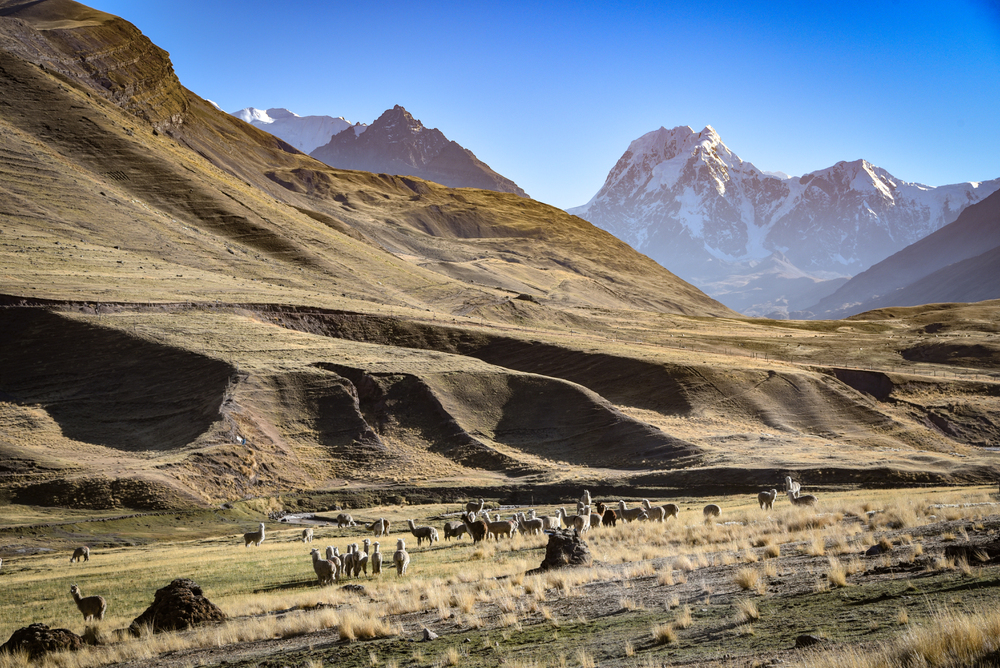
Sister to Vinicunca, Ausangate’s slopes showcase an even more dramatic color palette that seems almost too perfect to be natural. Bright turquoise mingles with deep red and golden yellow, creating natural gradients that photographers chase at dawn and dusk.
Indigenous communities have considered this mountain sacred for centuries, holding annual ceremonies to honor the mountain spirit they believe resides within its colorful slopes. The colors come from a complex mix of marine, lake, and river sediments, compressed over millions of years and then thrust upward by tectonic forces.
Local guides say the mountain changes its colors slightly with the seasons, as moisture levels and light conditions shift throughout the year.
Like Travel Pug’s content? Follow us on MSN.
Seven Colored Earth, Mauritius
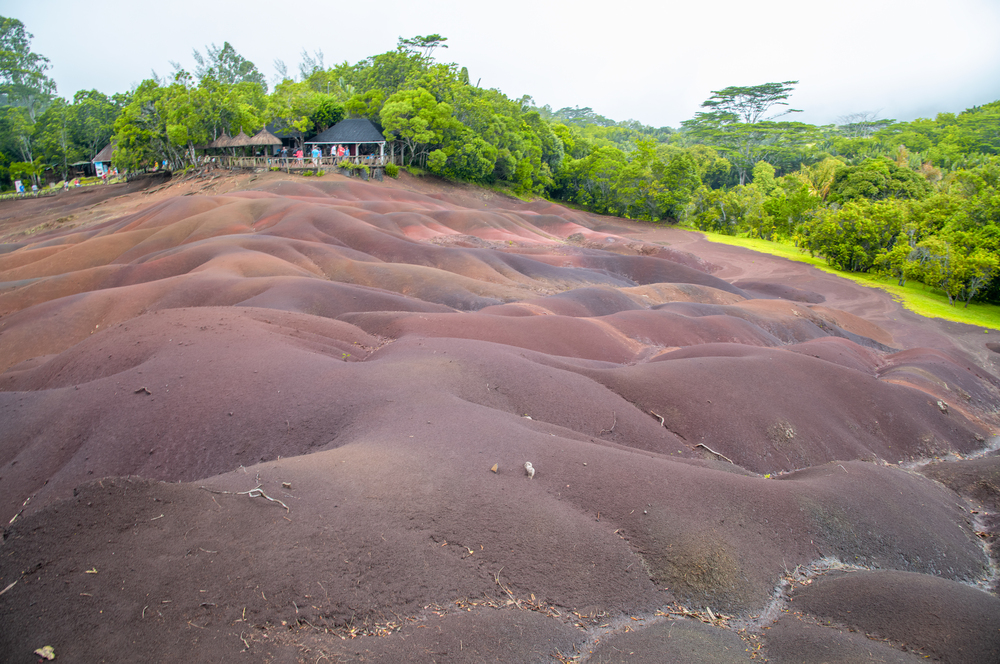
In a small corner of Chamarel, nature decided to create something truly unique with its paint box of geological phenomena. These rolling dunes showcase seven distinct colors of earth that never mix, even during the heaviest tropical downpours that frequently drench the island.
The purples, reds, and browns create natural patterns that seem almost too perfect to be real, yet they’re entirely natural – formed by volcanic ash cooling at different temperatures. Scientists are particularly fascinated by how the colors maintain their distinct boundaries, defying normal soil mixing patterns that occur elsewhere.
The surrounding tropical forest creates a stunning green frame for these rainbow dunes, making the colors appear even more vibrant by contrast.
Marble Caves, Chile
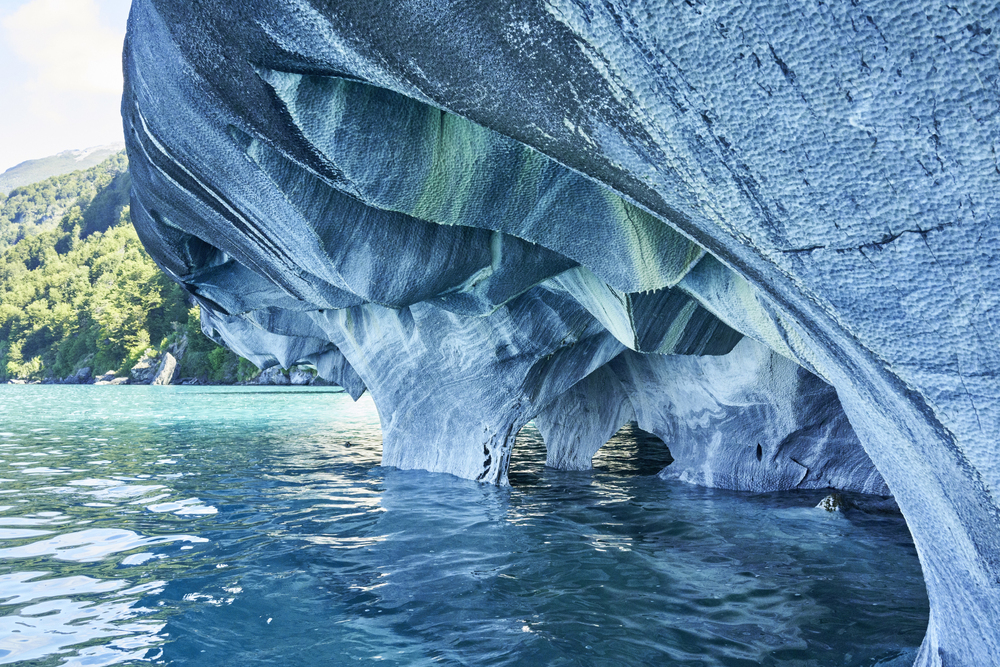
Carved by glacier-fed lake waters over thousands of years, these caves showcase nature’s talent for creating abstract art in stone. The marble walls display swirling patterns of blue, gray, and white that change intensity with the seasons and water levels in Lake General Carrera.
During spring, the crystal-clear waters reflect the colors, creating a mirror effect that makes photographers weak at their knees and often leaves visitors speechless. Local boat guides time their tours carefully to catch the perfect light conditions when the sun’s rays penetrate the cave openings and create natural light shows on the polished stone surfaces.
The caves are actually partially submerged marble outcroppings, and their current appearance is the result of over 6,000 years of wave action slowly carving out these smooth, colorful chambers.
Rainbow Beach, Australia

The cliffs at Rainbow Beach contain an astounding 72 different hues of sand, creating one of the most colorful coastlines in the world. Aboriginal legend says these colors came from a rainbow spirit who fell during a battle, though geologists point to rich mineral content and oxidation processes spanning millions of years.
The colors shift and change throughout the day as the angle of the sun changes, creating an ever-changing display that never looks quite the same twice. Visitors often collect small samples of different colored sands, amazed that each shade is completely natural and untouched by artificial pigments.
The most dramatic views come after rainfall when the wet sand deepens in color and creates natural patterns as it dries at different rates.
Like Travel Pug’s content? Follow us on MSN.
Landmannalaugar, Iceland
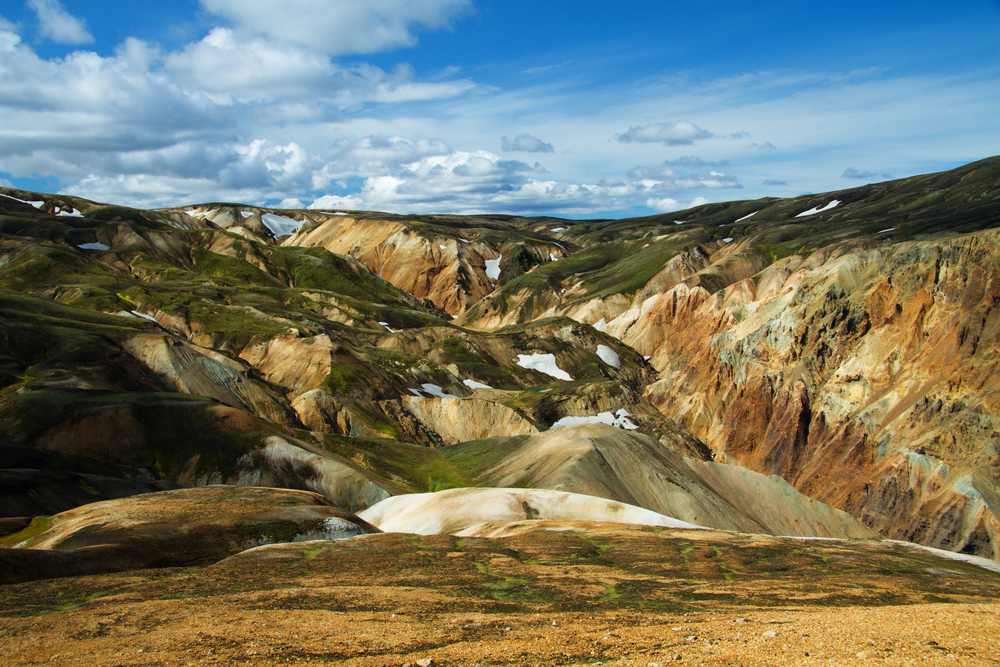
In the heart of Iceland’s highlands, rhyolite mountains create a landscape that seems more appropriate for an alien planet than Earth. The rocks shift between butter yellow, rusty red, and moss green, depending on the angle of the sun and the season, creating an otherworldly panorama that has inspired countless artists and photographers.
Steam rising from nearby hot springs adds an ethereal quality to an already supernatural scene, especially during the golden hours of the midnight sun. The area’s name literally means ‘the people’s pools,’ referring to the natural hot springs that reflect the colorful mountains like mirrors.
The contrast between the warm-colored rocks and the patches of snow that persist even in summer creates a striking visual that draws hikers from around the world.
Danxia Mountain, China
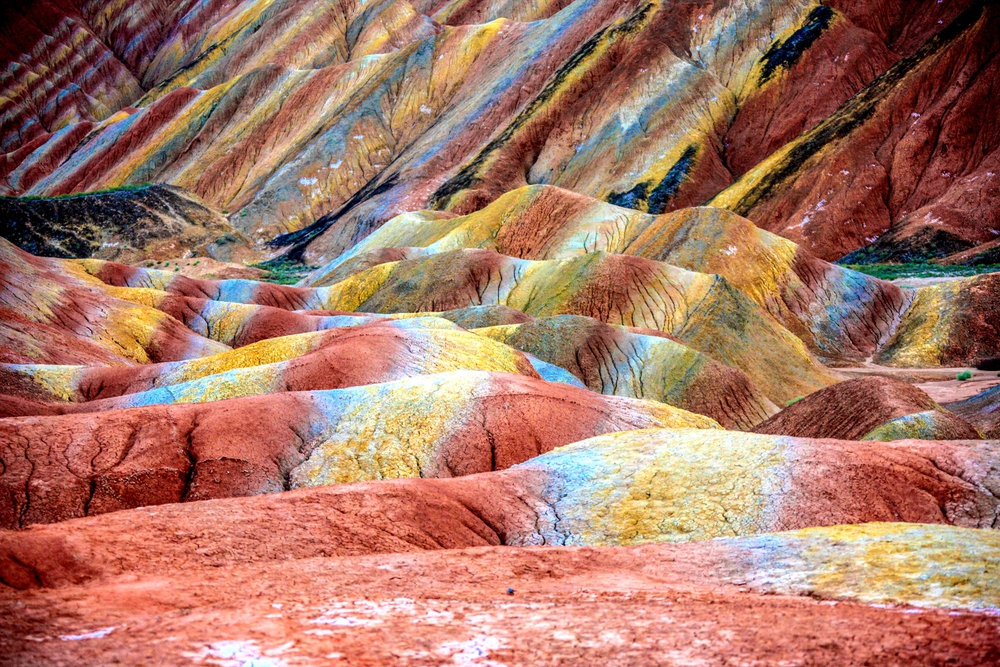
Different from its namesake in Zhangye, this formation in Guangdong province features dramatic red cliffs striped with white and yellow that seem to glow at sunset. The layers tell the story of ancient seas and changing climates, creating what looks like a giant layer cake cut open to reveal its colorful interior that stretches for miles.
Local artists have been drawing inspiration from these cliffs for centuries, with traditional Chinese paintings often featuring the distinctive striped patterns in their landscapes. The area is particularly famous for its ‘rock pillars,’ standalone formations that showcase the layered colors in vertical strips that catch the light differently throughout the day.
Visiting during different seasons reveals new colors as changing moisture levels bring out different mineral hues in the rock face.
Rainbow Mountains, Argentina
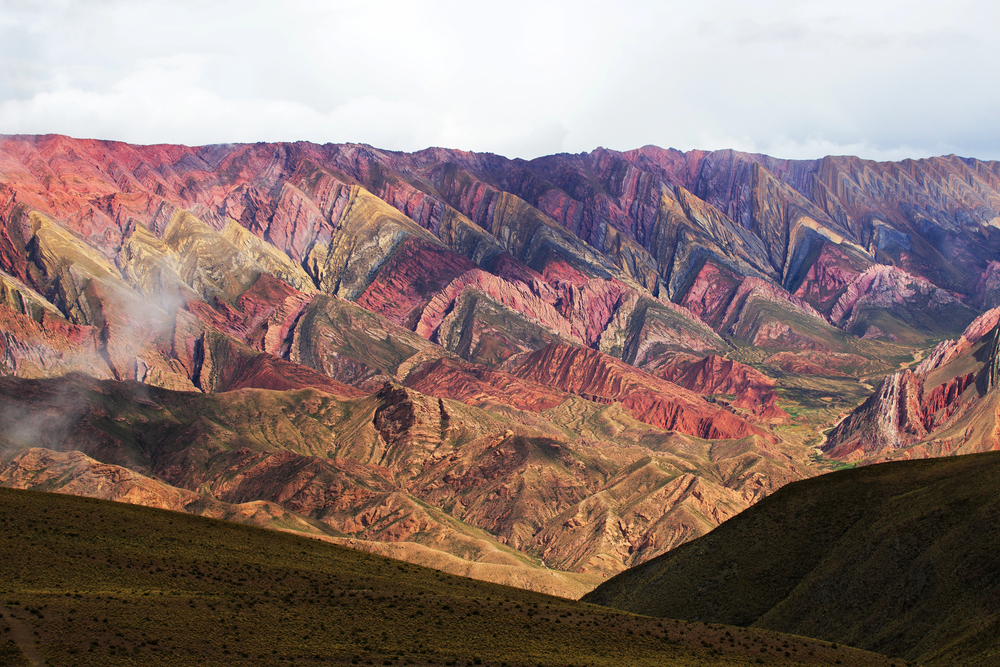
The Hornocal mountain range near Humahuaca creates a natural amphitheater of color that stops visitors in their tracks. Fourteen distinct hues stripe these mountains, created by different marine, lake, and river sediments deposited over millions of years when this area was underwater.
The best time to visit is late afternoon when the setting sun makes the colors pop like nature’s own light show, creating an effect that local guides call ‘the rainbow hour.’ The mountains rise at a nearly perfect 45-degree angle, creating symmetrical zigzags of color that seem almost artificially designed in their precision.
At an elevation of over 13,000 feet, these mountains often have their tops shrouded in clouds, adding drama to their already spectacular appearance.
Like Travel Pug’s content? Follow us on MSN.
Paint Mines, Colorado
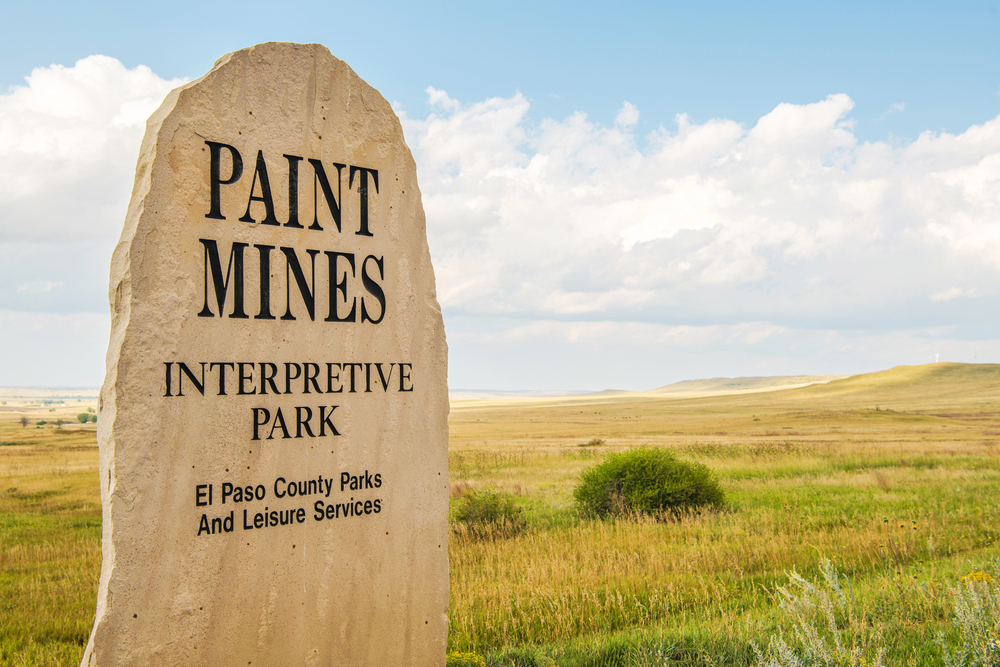
Hidden away in Colorado’s eastern plains, these interpretive parks showcase spires and hoodoos in shades of pink, orange, and purple that seem to dance in the changing light. Native Americans once collected the colorful clays for pottery and ceremonial paint, leaving behind a legacy that continues to inspire artists today.
Archaeological evidence suggests that people have been drawn to these colorful formations for at least 9,000 years, using the different colored clays for both practical and ceremonial purposes. The formations are particularly striking after rainfall when the wet clay becomes more vibrant, and the eroded gullies create natural reflecting pools.
Local photographers often visit at dawn when the first light creates long shadows that emphasize the fantastic shapes of the hoodoos.
Rainbow Valley, Australia
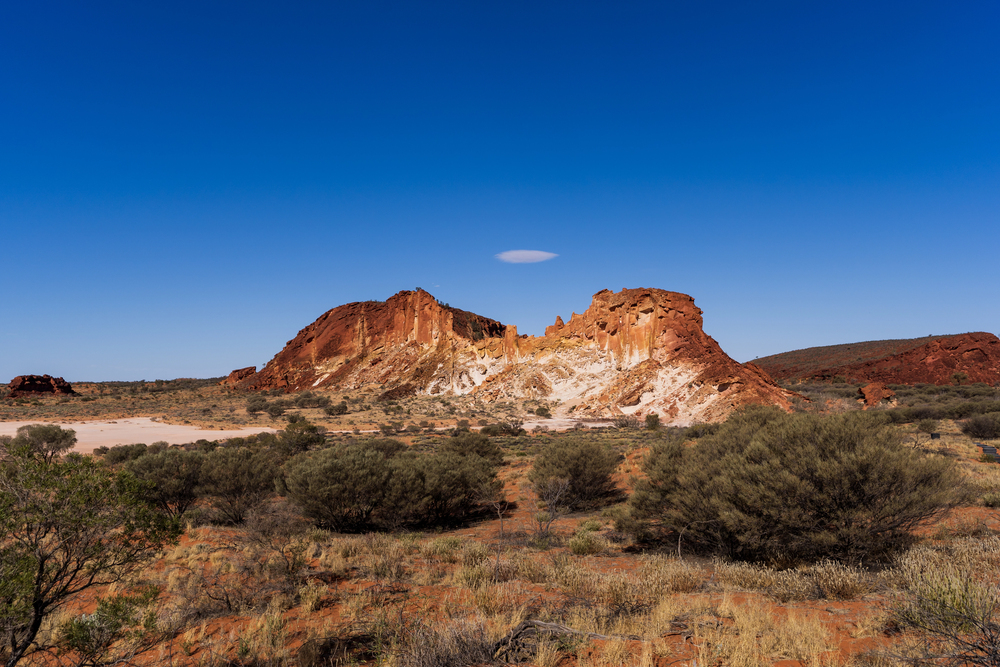
Deep in the Northern Territory, sandstone cliffs display bands of color that seem to glow from within during sunset, creating a natural light show that attracts photographers from around the world. The Aboriginal people have long considered this place sacred, with the rainbow bands featuring prominently in their Dreamtime stories passed down through generations.
The colors become particularly intense after rainfall when the wet rock face deepens in tone and creates mirror-like reflections in the temporary pools that form below. The surrounding red desert makes the rainbow bands stand out even more dramatically, especially during the golden hours when the sun sits low on the horizon.
Local tour guides time their visits carefully to catch the perfect lighting conditions when the colors are most vibrant.
Glass Beach Cliffs, California

While technically artificial, these cliffs tell a story of nature reclaiming human mistakes in the most beautiful way possible. Years of dumping glass have created multicolored cliffs that sparkle in the sunlight, with smooth sea glass in every color of the rainbow embedded in the rock face like natural jewels.
The transformation began in the early 1900s and continues today, with ocean waves constantly polishing new pieces of glass and rearranging the colorful display. Professional photographers often visit during low tide when the wet glass catches the sunlight and creates a natural light show.
The site serves as a reminder of nature’s remarkable ability to transform human waste into something unexpectedly beautiful.
Like Travel Pug’s content? Follow us on MSN.
Quebrada de Humahuaca, Argentina
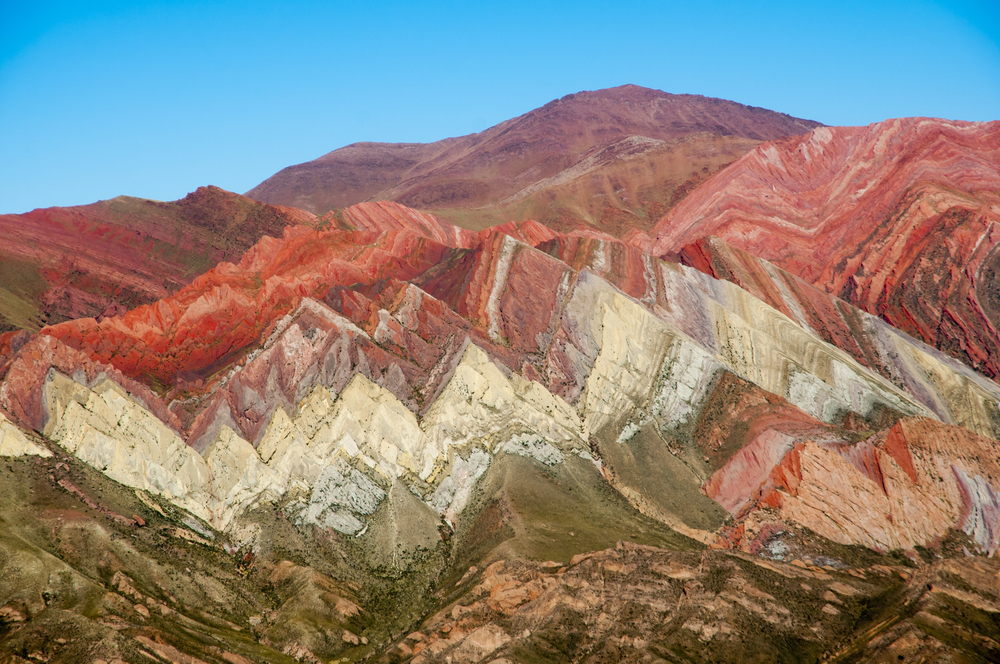
This UNESCO World Heritage site features mountains that look like they’ve been painted with an artist’s most vibrant pigments, creating a natural gallery of geological history. The reds, purples, and greens tell a geological story spanning 600 million years, creating a natural timeline visible to the naked eye that scientists use to study Earth’s history.
Local communities have developed a deep connection with these colorful mountains, incorporating their distinct hues into traditional textiles and artwork. The colors appear to shift and change throughout the day as the sun moves across the sky, creating an ever-changing display that never looks quite the same twice.
During sunrise and sunset, the mountains seem to catch fire with intense reds and oranges that reflect off the clouds.
Bungle Bungle Range, Australia

The beehive-shaped domes of Purnululu National Park alternate between orange and black stripes, creating one of the most distinctive landscapes in Australia’s Kimberley region. When the sun hits them just right, they seem to glow from within, creating a light show that’s been amazing visitors since the area was first opened to the public in 1983.
The distinctive striping pattern was created over 350 million years ago as layers of sandstone were deposited and later shaped by wind and rain into their current beehive-like formations. The Aboriginal people have known about these formations for thousands of years but kept them secret until the 1980s, considering them a sacred place.
The colors become particularly intense during the wet season when rain darkens the bands of cyanobacteria to almost black, creating an even more dramatic contrast with the orange sandstone.
Rainbow Hills, Kazakhstan
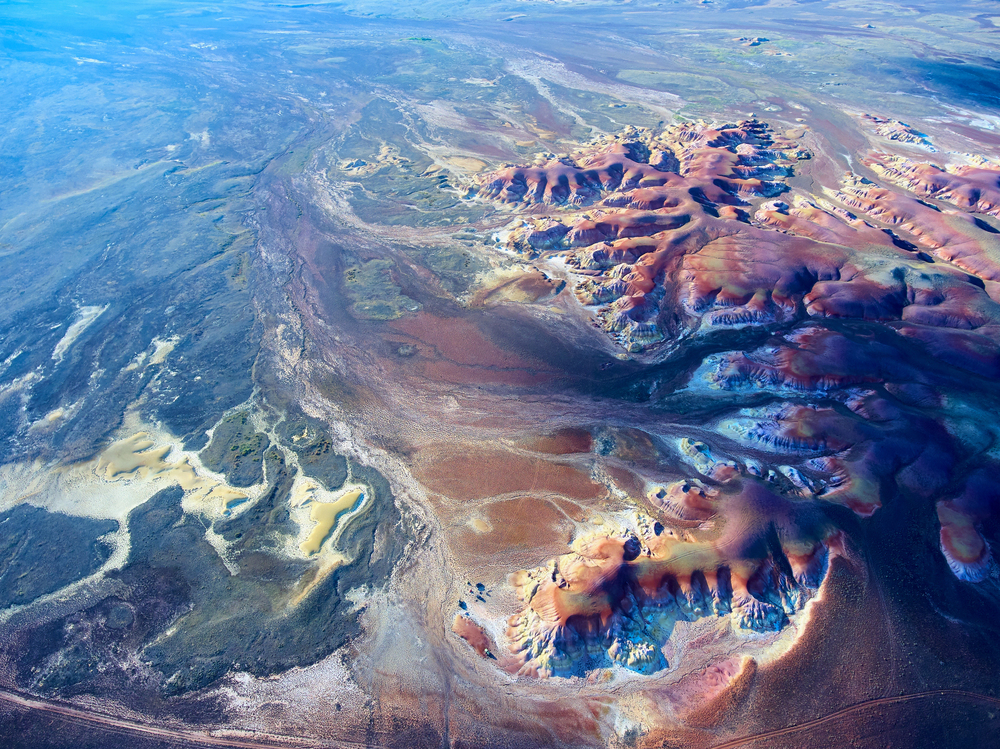
The Aktau Mountains showcase a palette of colors that seem almost too perfect to be natural, stretching across the landscape like giant abstract paintings. White, pink, red, and green layers create a landscape that photographers often mistake for a digital manipulation until they see it with their own eyes.
The colors come from different mineral deposits laid down when this area was an ancient seabed, with each layer representing a different period in Earth’s history. Local geologists use these colorful bands as a natural timeline, reading the region’s past in its vibrant stripes.
The remote location means these hills see relatively few visitors, allowing them to maintain their pristine appearance.
Like Travel Pug’s content? Follow us on MSN.
Kasha-Katuwe, New Mexico
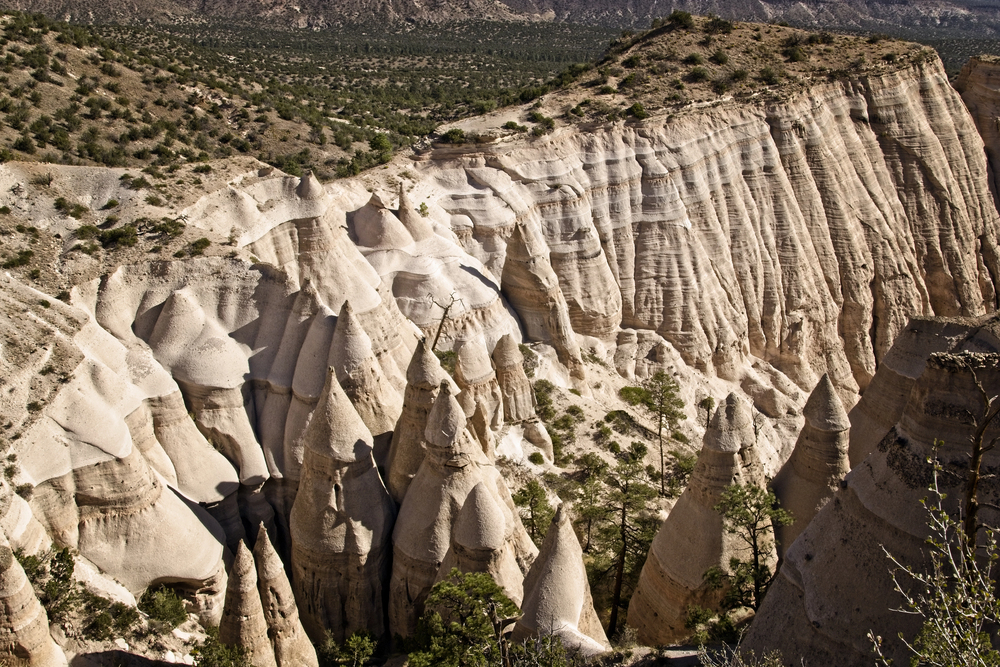
The tent rocks here feature layers of volcanic deposits that create subtle rainbow effects in the right light, telling the story of ancient volcanic eruptions in the region. The white and gray base tones are highlighted by minerals that add hints of pink, yellow, and blue throughout the distinctive cone-shaped formations, creating natural sculptures that seem almost too perfect to be natural.
Wind and water have spent millions of years carving these formations into their current shape, with each layer representing a different volcanic event. Local Pueblo peoples have incorporated these unique formations into their traditional stories and consider the area sacred.
The narrow canyons between the formations create dramatic light and shadow effects that make the colors appear to shift and change throughout the day.
John Day Fossil Beds, Oregon
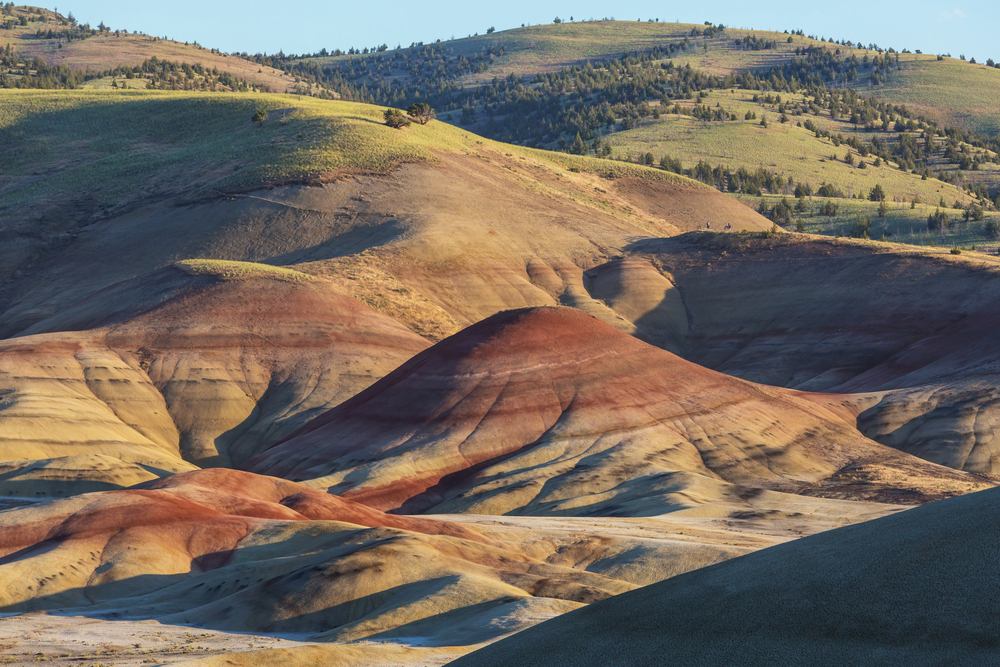
The Painted Hills unit of this national monument showcases layers of red, tan, and gold that mark different geological eras with stunning precision. The colors change intensity depending on the light and moisture levels, making every visit a unique experience, even for frequent visitors.
These hills contain detailed records of ancient climate change, with each layer representing a different environmental period from the region’s past, spanning over 40 million years. The most dramatic views come after a light rain when the moisture deepens the reds and brings out subtle variations in the lighter bands.
Park rangers often tell visitors that the best photographs are taken during the ‘golden hour’ before sunset when the low angle of the sun makes the colors appear to glow from within.
Rainbow Mountain, British Columbia
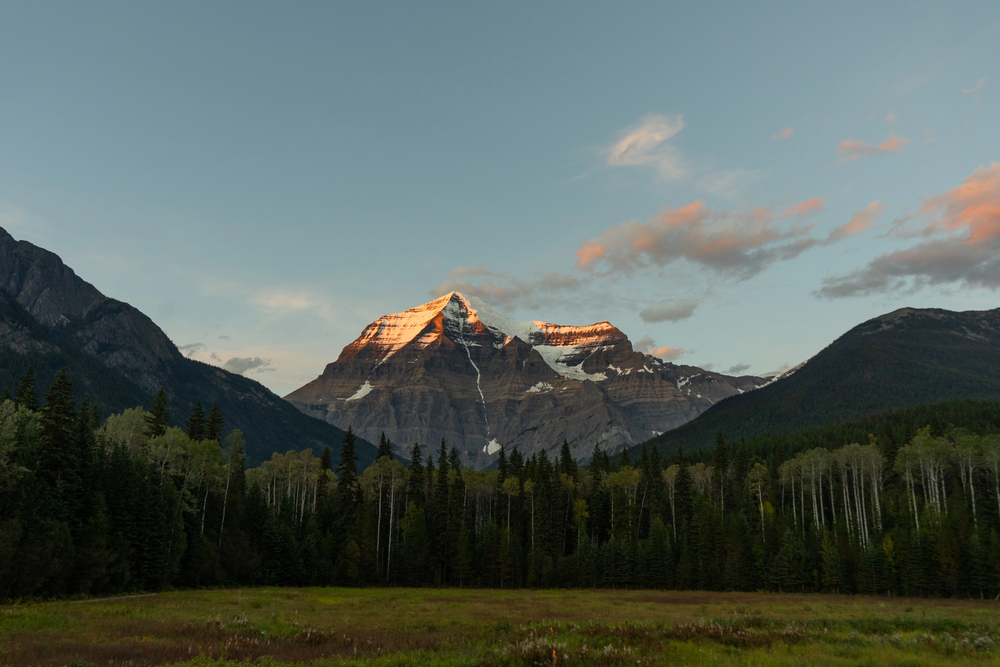
Tucked away in the Canadian wilderness, this lesser-known rainbow mountain features bands of volcanic rock in shades of red, yellow, and brown that seem to ripple across the mountainside. Unlike its more famous cousins in Peru and China, this one requires serious hiking to reach, making the colorful display at the top even more rewarding for those who make the journey.
Local mountaineers report that the colors appear different throughout the climbing season as changing light and weather conditions interact with the mineral-rich rock faces. The surrounding glaciers create a striking contrast with the colorful rock, especially during summer months when wildflowers add their own colors to the landscape.
The remote location means that visitors often have the entire viewpoint to themselves, allowing for uninterrupted contemplation of this natural wonder.
Like Travel Pug’s content? Follow us on MSN.
A Canvas Still in the Making
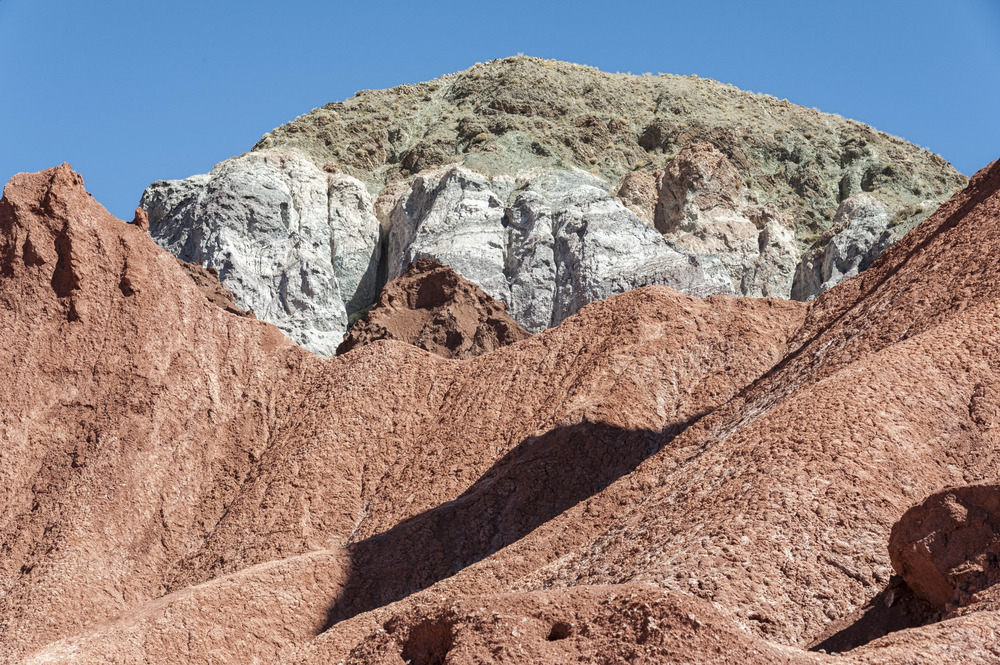
These rainbow-colored formations remind us that Earth is an artist that never stops creating. As erosion continues to shape these cliffs and hills, and mineral deposits continue to paint new layers, these natural wonders keep evolving. They stand as a testament to the fact that sometimes reality can be more colorful than imagination – you just need to know where to look.
The preservation of these sites becomes increasingly important as more people discover their beauty, ensuring future generations can witness nature’s most spectacular color displays. Their existence reminds us that our planet’s most incredible artworks aren’t hanging in museums – they’re waiting to be discovered in the natural world.
More from Travel Pug

- 15 Dangerous European Cities to Avoid
- 15 Caribbean Islands Where Tourists Keep Getting Scammed
- The 20 Most Fascinating Abandoned Places: A Journey Through Time and Forgotten Spaces
- 15 Hidden Places in the Smithsonian Museums Locals Love: A Guide to Lesser-Known Treasures
- 16 Hidden Florida Beach Towns That Aren’t Overrun with Tourists
Like Travel Pug’s content? Follow us on MSN.
